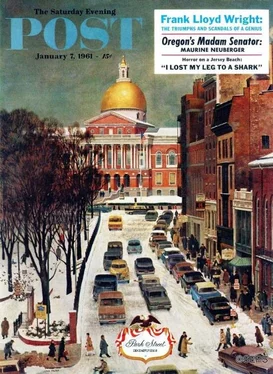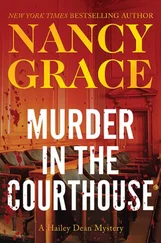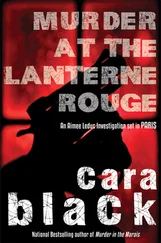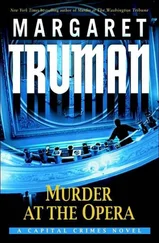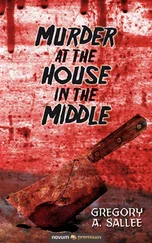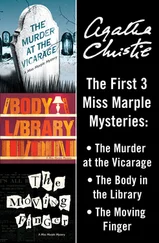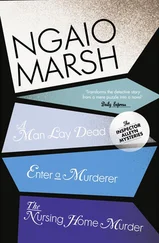William P. McGivern
Murder on the Turnpike
Story was originally serialized in three issues the “Saturday Evening Post” in January 1961.

The headlights rushed at him like long yellow lances. They swept by on his left in a formation of threes, each pair of lights following its own lane; but they might change direction at any instant, he thought, and plunge straight at his car. There was always the unknown enemy to fear...
He was traveling south on the Tri-State Turnpike. New York was a dozen miles behind him. Now he was safe, an innocent, anonymous unit in a vast complex of speeding cars and flashing lights. In the rear-vision mirror the lane behind him stretched emptily for several hundred yards. And ahead of him, less than a quarter of a mile away, was a Howard Johnson’s restaurant and service station, gleaming like a necklace of diamonds in the darkness.
He pumped the brakes and swung off the pike, stopping on the graveled roadbed that flanked the highway. Now he was about two hundred yards from the restaurant.
The traffic rushed by him, the headlights splintering on his thick glasses. He blinked his large eyes. The noise and movement confused him — the spinning tires, the flashing lights and the exhaust fumes of roaring traffic. But one thing was untouched by the bewildering racket of the turnpike — the plans he had made. They were like a rock of purpose in tossing, uncertain seas.
He climbed from his car, removed his hat and bulky tweed overcoat, and threw them into the back seat. Then he switched off the headlights, took the key from the ignition and hurled it with all his strength into the black fields bordering the pike. Let them figure that out, he thought, smiling.
He was tall and broad, heavily and powerfully, built, with an iron-gray crew cut and strong, harshly cut features. When he smiled, his teeth flashed in the darkness, white and pronounced. Everything about him projected a sense of purpose and determination. Everything, that is, but his eyes; they were mild and clear, and when he was excited, they glittered with a childish sort of anticipation and malice.
As he walked swiftly from his car, legs churning powerfully and shoulders hunched into the wind, he was conscious of only two needs. The first was for another car. That was terribly important. He must have a car. And second, and equally important, was the need for something hot and sweet to drink. After what he had done, his whole body ached for the comfort and reassurance of steaming, heavily sugared coffee.
It was not quite seven o’clock.
Trooper Dan O’Leary spotted the abandoned car five minutes later as he swept along with the northbound traffic. He speeded up to give himself room for a turn, then drove up onto the wide lane of grass which separated the north-and southbound streams of traffic. When the highway was clear, he bumped down into the southbound lane and pulled up behind the apparently empty car, the headlights of his patrol car bathing it in yellow radiance. O’Leary picked up the phone that hung on the right side of the steering post and reported to the dispatcher at Turnpike Headquarters, sixteen miles south at the River head Station.
“Patrol Twenty-one, O’Leary, I’m checking a stopped Buick, a ’Fifty-one sedan. New York plates.” He repeated the numbers twice, then glanced at a numbered milepost a dozen yards or so beyond the Buick. The turnpike was marked by such mileposts from the first exit to the last, and O’Leary had stopped at No. 114. He gave that information to the dispatcher and stepped from his car with a hand resting on the butt of his revolver.
This action was reflexive, a result or training which had been designed to make his responses almost instinctive under certain circumstances. There was seldom anything casual or whimsical about his work He had stopped behind the parked car for good reasons; he could approach it under the cover of his own lights, and he was in no danger of being run down. His report to the dispatcher was equally a matter of training and good sense; if he were fired on or if the car raced away from him, its description would go out to a hundred patrols in a matter of seconds And it was the same thing with his gun; the car looked empty, but O’Leary approached it ready for trouble. He flashed his light into the front and rear seats, noted the tweed overcoat and gray felt hat. There was no key in the ignition. He touched the hood and found it warm. Probably out of gas. He went around to take a look at the trunk.
While O’Leary made this preliminary investigation. Sergeant Tonelli, the dispatcher at the Riverhead Station, checked the license number O’Leary had given him against the current file of stolen cars. Tonelli, a tall, spare man with graying hair and thick, white eyebrows, sat in the middle of a semicircular desk in the headquarters office. Strong overhead lights flooded the room with noonday brightness, pushing back the darkness beyond the wide, high windows. The glare of the turnpike swept past the three-storied headquarters buildings, six lanes of traffic flowing smoothly into the night. Directly behind Tonelli a door led to Captain Royce’s office. The captain was at his desk checking certain arrangements and plans which he had submitted weeks earlier to the Secret Service, The plans had been approved, and Captain Royce was presently giving them a last, careful inspection.
The current file of stolen cars was impaled on a spike near Tonelli’s big right hand, and he flipped through the lists with automatic efficiency while continuing to monitor the reports crackling from the speaker above his switchboard. Sergeant Tonelli was responsible for approximately one third of the hundred-mile length of the turnpike. This area was designated as Headquarters North. Two subsidiary stations, Substation Central and Substation South, divided the remaining sixty-odd miles between them; their responsibility was limited to traffic, and in all other matters they look orders from headquarters and Captain Royce.
Under Sergeant Tonelli’s direct control were eighteen patrol cars, assorted ambulances, tow trucks, fire and riot equipment. In his mind was a faithful and imaginative picture of the turnpike at this exact moment; he knew to the mile the location of each patrol car and what it was doing; he knew of the speeding Mercedes-Benz being chased ten miles north; he knew of the accident that had plugged up the slow and middle lanes beyond Interchange 10, and he knew, of course, that Dan O’Leary, Car 21, was presently investigating a Buick parked at Milepost 114.
In addition to this routine activity, Sergeant Tonelli was considering certain areas of the problem that faced Captain Royce. The President of the United States would be riding on the turnpike tonight, entering in convoy at Interchange 5 and traveling south to the end of the pike, a distance of about fifty miles. Sergeant Tonelli would dispatch certain of his patrol cars to that area in an hour or so, and he was turning over in his mind how best to take up the slack that would be caused by their departure.
But meanwhile he continued his check of the stolen-cars file, a check which proved futile.
Trooper O’Leary returned to his patrol car and called headquarters. He said to Tonelli, “Car Twenty-one. O’Leary. Looks like the Buick’s out of gas. The driver must have walked up to the Howard Johnson’s. I’ll check and see if he needs help.”
“Proceed, Twenty-one.”
O’Leary drove into the service area and pulled up to the gas pumps. A wiry, gray-haired attendant hurried to his car.
O’Leary rolled down his window, “Anyone been in for a can of gas, Tom?”
Читать дальше
